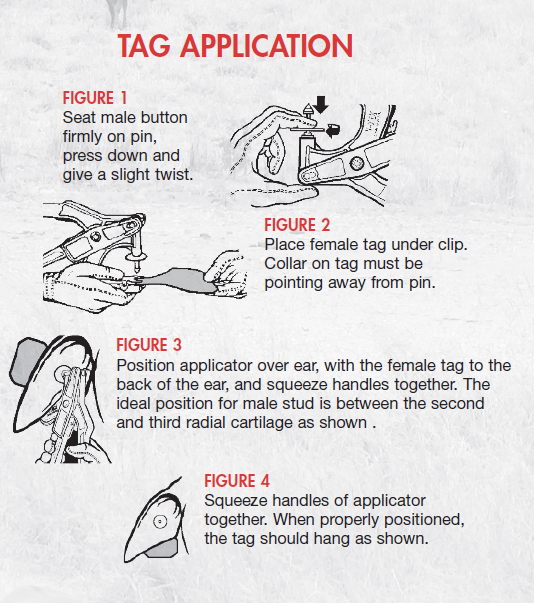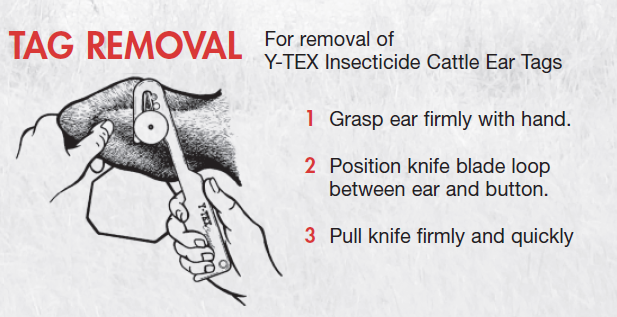Handy hints and tips for the use of Insecticidal Ear Tags for cattle
General
- READ THE LABEL. Always adhere to the manufacturers recommended dose and dilution rates when applying an insecticide. Under no circumstance should you increase the dosage of an insecticide if you think it is not working properly or reduce the dosage for the purpose of economising.
- Always keep the tags out of the sun as they will become soft and more difficult to apply.
- Use an integrated approach to controlling the pest with the use of biological and non-chemical methods in association with the best chemical method available – currently insecticidal ear tags.
Things to do before tagging
- Synchronize the application of insecticidal ear tags or other control measures with neighbours to minimise the fly’s transfer from property to property and thus increase the area-wide kill rates.
- Have a survey done of the existing species of Dung Beetle on your property so that the beneficial species may be incorporated into your fly control management strategy.
Best ways to prevent or treat infections from ear tags
- To help avoid after-tagging ear-infections, hold the male button part of the tag in a reservoir of antiseptic solution e.g. Chlorodex.
- Infections at the tag site are generally on cattle with hairy ears or because of pinching by the tag which keeps the site moist. An application of Cetrimide Antiseptic Spray or similar will help to alleviate this problem.
Hints for applying ear tags
- Tagging will be easier on both the handler and the animal if the animal is restrained in a head-bail.
- Insecticidal ear tags should be applied to the back of the ear. This allows for more even distribution of insecticide.
- The best place on the back of the ear to apply a tag is between the two medial rib cartilages where the animal will experience less pain and little bleeding. The cartilages also help prevent the tag from tearing out. The site should be about 10cms from the tip of the ear. (This will vary among British breed and Zebu cattle.)
- Once the tag has been applied, it is a good idea to give it 2-3 sharp tugs to ensure it has positioned at the end of the male button shaft. This allows air to circulate around the wound. Y-Tex® Insecticidal Ear Tags must be applied with the Y-Tex® Ultra Tagger or the Y-Tex® adapter pin in another applicator.
- Remove tags using the Tag removal knife.

